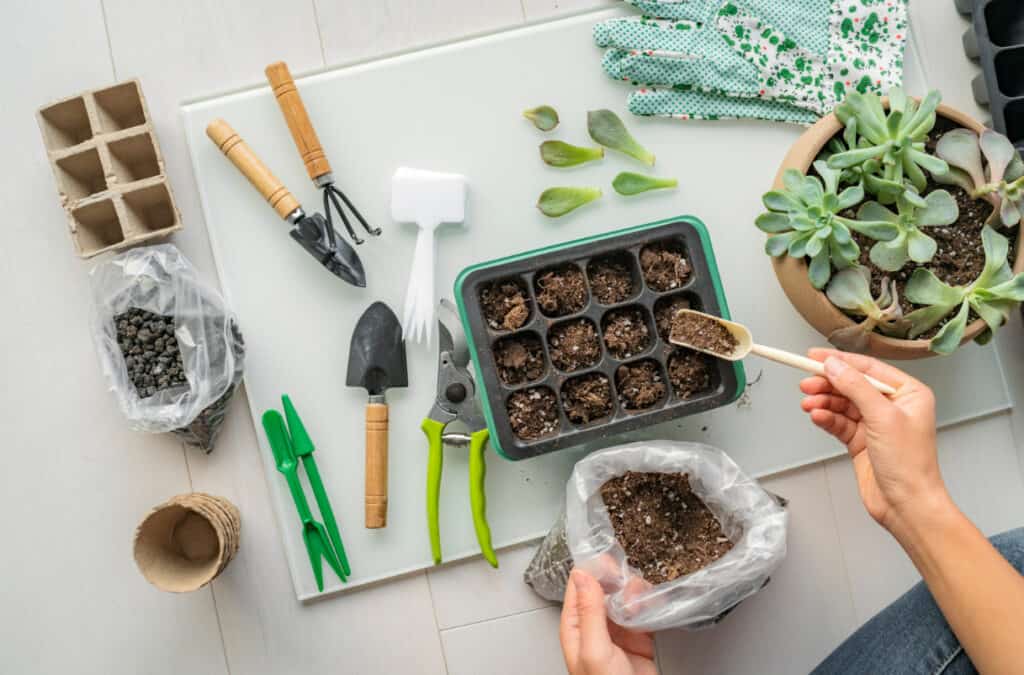Gardens that need less attention are an ideal choice for many house owners in this modern era where people want to have a beautiful and calm garden, but without spending too much time on its maintenance.
Table of Contents
These gardens create a green, welcoming outdoor area that doesn’t require lots of care. The design is made to reduce effort while increasing pleasure making it perfect for active people who wish to relish the advantages of a lovely landscape without doing tedious work all time.
On this post, let’s explore the practical ways on how you can create a low-maintenance home garden to sustain you and your family.

Choosing the Right Plants
The most crucial element for a low-upkeep garden is choosing the correct plants. Go with local plants that match your area’s climate and soil conditions well. These kinds of plants will naturally adjust to your surroundings, needing less water, fertilizer and attention in comparison to non-local species.
Also, perennials are good because they come back every year and you don’t need to plant them again. Think about plants that can withstand drought like succulents and ornamental grasses which grow well with less water.

Efficient Irrigation Systems
Watering the garden is a duty that can take up significant time. If you set up an effective irrigation method, like drip or soaker, it makes sure your plants get the correct amount of water without needing any manual activity.
These systems directly supply water to plant roots, lessening evaporation and wastage of water. Automatic timers make it even simpler, as you can set a schedule that suits your garden’s requirements while doing other things.
Incorporating Hardscaping Elements
Elements of hardscape, like patios, walkways and retaining walls give your garden structure and purpose. They also help lessen the amount of space that needs routine maintenance. Materials such as stone, brick or concrete are strong and need less care – they provide lasting beauty with little upkeep needed for years to come.
Adding spots for sitting down, places to put plants in pots and other decorative things can make a warm outdoor living area which you don’t have to take care of much but enjoy more often in your garden.
Ground Cover Alternatives
The third tactic for lessening garden care is to replace regular grass with ground cover plants. Ground covers like clover, thyme or creeping juniper need not as much watering, trimming and applying fertilizers compared to traditional lawns.
These also create a nice looking green rug that can handle walking on it and keep away weeds. Think about utilizing compact tractors to handle and care for ground covers in bigger areas. This can help with keeping up the maintenance of expansive sections, making it easier to manage tasks on a large scale.
Seasonal Planting Strategies
To distribute the garden maintenance tasks evenly across the year, select plants that flower at diverse moments to guarantee continual color and attraction without triggering periods of intensive labor.
Also, grouping together plants with similar care needs facilitates your maintenance routine. It makes it simpler for you to give the appropriate care at an appropriate time without overburdening yourself.
Low-Maintenance Lawn Care
If you like the usual lawn, you can lessen its maintenance. Choose grass kinds that need less care and are tough as well as resistant to drought like buffalo grass or fescue.
Mow not so often and set it high to support deep root growth and lower water requirements. Think about a mulching mower. This kind of mower doesn’t collect the grass clippings but lets them fall back onto the lawn.
The cuttings then break down quickly and act as a natural fertilizer for your grass. For bigger lawns, you can use compact tractors with mowing attachments to help lessen the time and effort needed for regular maintenance.
Pruning and Trimming Simplified
Regular pruning and trimming are important for keeping your garden in good order and health. However, this task doesn’t need to be hard work. Select plants that require less pruning like slow-growing bushes or natural shape trees.
When you do prune, make sure to use good tools and methods for clean cuts which help with healthy growth. During the inactive season, pruning jobs can be planned to decrease the amount of work since plants are not growing as strongly and therefore easier to handle.
Fertilizing with Ease
Make your fertilizing schedule easier with slow-release fertilizers. These kinds of fertilizers give nutrients slowly over time, so you don’t need to apply them as often and it gives steady food for your plants.
You can mix in organic choices such as compost or well-aged manure when you put the soil at planting time or use it as a top covering that feeds gradually. Also, think about setting up a compost system. This lets you recycle your garden waste and make your own fertilizer that is full of nutrients without too much work.
Pest and Disease Management
Strategies of IPM, they can assist in controlling pests and diseases without depending too much on chemical treatments. You should promote the presence of useful bugs, like ladybugs or predatory wasps by growing many kinds of flowers.
Apply barriers that are physical such as row covers or nets to shield plants from insects’ harm. Look over at your plants often to see if there are any pests or diseases.
If you spot a problem, deal with it right away using treatments made for that specific issue. Keeping a strong and balanced environment in your garden will help to decrease pest problems naturally, decreasing the necessity for action.
Creating Wildlife-Friendly Habitats
Planning a low-maintenance home garden which entices and assists local wildlife can lessen the requirement for maintenance while improving the inherent charm of your space. Include indigenous flora that serves as food and shelter for birds, butterflies, and useful insects.
Fit bird feeders, birdbaths, as well as nesting boxes to urge wildlife visitation and settlement in the area. Encouraging a harmonious environment with both predators and prey can assist in controlling pest amounts, lessening the use of chemicals and demanding work methods.

Start Your Own Low-Maintenance Home Garden
To create a low-maintenance home garden, plan carefully and use smart techniques like choosing suitable plants, mulching, setting up efficient watering systems, incorporating hardscaping, and using ground covers.
Strategies for seasonal planting, easier lawn care, simple pruning, and integrated fertilization and pest management also reduce workload. Compact tractors streamline heavy tasks in large gardens. Promoting wildlife-friendly habitats enhances natural beauty and reduces upkeep throughout the year.



